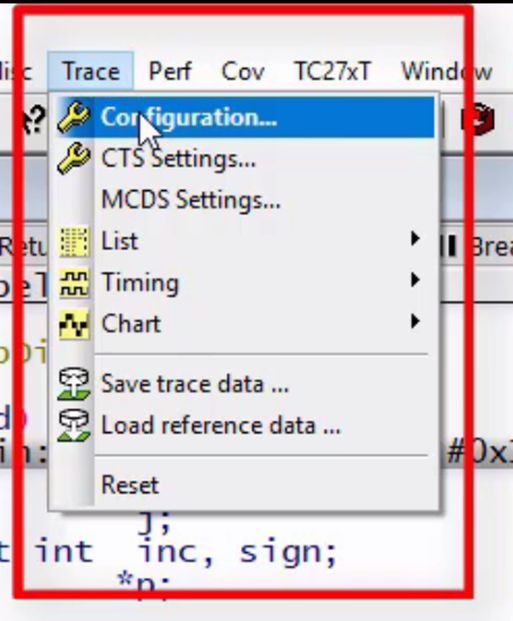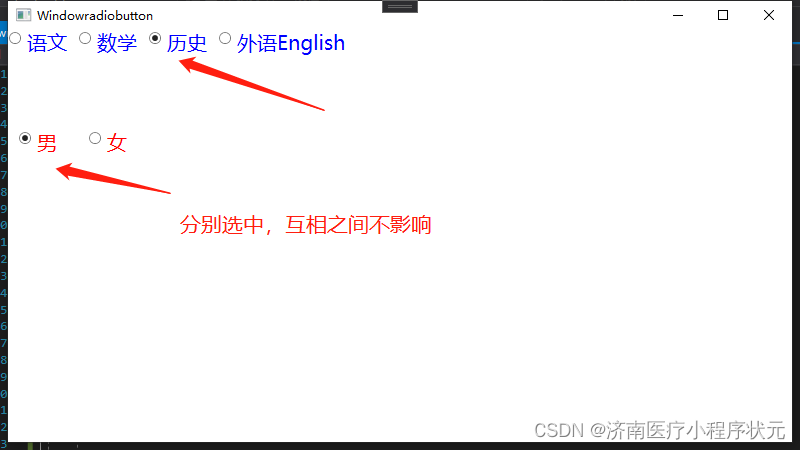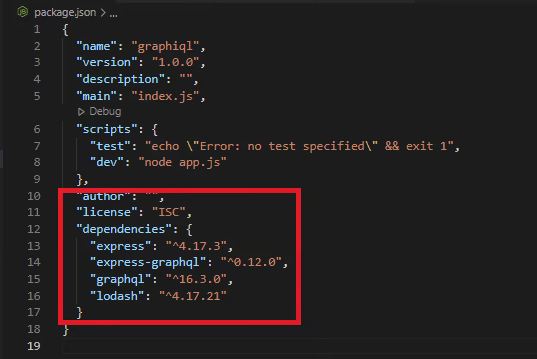当前位置:网站首页>t-sne 数据可视化网络中的部分参数+
t-sne 数据可视化网络中的部分参数+
2022-07-31 15:29:00 【FakeOccupational】
注:本代码主要实现对于网络中对于某个中间特征或计算得到的网络参数的可视化实现。如果仅可视化网络中的某个简单的参数,可以考虑使用 model.weight得到矩阵,然后放入分部代码中的降维可视化部分即可。TSNE参数说明
总体代码
import torch
import torch.nn as nn
import torch.nn.functional as F
from sklearn.manifold import TSNE
import matplotlib.pyplot as plt
class Network(nn.Module): # extend nn.Module class of nn
def __init__(self):
super().__init__() # super class constructor
self.conv1 = nn.Conv2d(in_channels=1, out_channels=6, kernel_size=(5, 5))
self.batchN1 = nn.BatchNorm2d(num_features=6)
self.conv2 = nn.Conv2d(in_channels=6, out_channels=12, kernel_size=(5, 5))
self.fc1 = nn.Linear(in_features=12 * 4 * 4, out_features=120)
self.batchN2 = nn.BatchNorm1d(num_features=120)
self.fc2 = nn.Linear(in_features=120, out_features=60)
self.out = nn.Linear(in_features=60, out_features=10)
def forward(self, t): # implements the forward method (flow of tensors)
# hidden conv layer
t = self.conv1(t)
t = F.max_pool2d(input=t, kernel_size=2, stride=2)
t = F.relu(t)
t = self.batchN1(t)
# hidden conv layer
t = self.conv2(t)
t = F.max_pool2d(input=t, kernel_size=2, stride=2)
t = F.relu(t)
# flatten
t = t.reshape(-1, 12 * 4 * 4)
t = self.fc1(t)
t = F.relu(t)
t = self.batchN2(t)
t = self.fc2(t)
t = F.relu(t)
# output
t = self.out(t)
return t
cnn_model = Network() # init model
pretrained_dict = cnn_model.state_dict()
class Identity(nn.Module):
def __init__(self):
super(Identity, self).__init__()
self.conv1 = nn.Conv2d(in_channels=1, out_channels=6, kernel_size=(5, 5))
def forward(self, x):
return x
model = Identity()
model_dict = model.state_dict()
# model.load_state_dict(pretrained_dict) # RuntimeError: Error(s) in loading state_dict for Identity: Unexpected key(s) in state_dict: "batchN1.weight", "batchN1.bias", "batchN1.running_mean",
# 1. filter out unnecessary keys
pretrained_dict = {
k: v for k, v in pretrained_dict.items() if k in model_dict}
# 2. overwrite entries in the existing state dict
model_dict.update(pretrained_dict)
# 3. load the new state dict
model.load_state_dict(pretrained_dict)
vector = model.conv1.weight.detach().numpy()[0,0,:,:]
digits_final = TSNE(perplexity=30).fit_transform(vector) #
plt.scatter(digits_final[:,0], digits_final[:,1])
plt.show()
功能分部代码
模型处理部分
import torch
import torch.nn as nn
import torch.nn.functional as F
class Network(nn.Module): # extend nn.Module class of nn
def __init__(self):
super().__init__() # super class constructor
self.conv1 = nn.Conv2d(in_channels=1, out_channels=6, kernel_size=(5, 5))
self.batchN1 = nn.BatchNorm2d(num_features=6)
self.conv2 = nn.Conv2d(in_channels=6, out_channels=12, kernel_size=(5, 5))
self.fc1 = nn.Linear(in_features=12 * 4 * 4, out_features=120)
self.batchN2 = nn.BatchNorm1d(num_features=120)
self.fc2 = nn.Linear(in_features=120, out_features=60)
self.out = nn.Linear(in_features=60, out_features=10)
def forward(self, t): # implements the forward method (flow of tensors)
# hidden conv layer
t = self.conv1(t)
t = F.max_pool2d(input=t, kernel_size=2, stride=2)
t = F.relu(t)
t = self.batchN1(t)
# hidden conv layer
t = self.conv2(t)
t = F.max_pool2d(input=t, kernel_size=2, stride=2)
t = F.relu(t)
# flatten
t = t.reshape(-1, 12 * 4 * 4)
t = self.fc1(t)
t = F.relu(t)
t = self.batchN2(t)
t = self.fc2(t)
t = F.relu(t)
# output
t = self.out(t)
return t
cnn_model = Network() # init model
pretrained_dict = cnn_model.state_dict()
class Identity(nn.Module):
def __init__(self):
super(Identity, self).__init__()
self.conv1 = nn.Conv2d(in_channels=1, out_channels=6, kernel_size=(5, 5))
def forward(self, x):
return x
model = Identity()
model_dict = model.state_dict()
# model.load_state_dict(pretrained_dict) # RuntimeError: Error(s) in loading state_dict for Identity: Unexpected key(s) in state_dict: "batchN1.weight", "batchN1.bias", "batchN1.running_mean",
# 1. filter out unnecessary keys
pretrained_dict = {
k: v for k, v in pretrained_dict.items() if k in model_dict}
# 2. overwrite entries in the existing state dict
model_dict.update(pretrained_dict)
# 3. load the new state dict
model.load_state_dict(pretrained_dict)
降维可视化部分
import numpy as np
import sklearn #Import scikitlearn for machine learning functionalities
from sklearn.manifold import TSNE
from sklearn.datasets import load_digits # For the UCI ML handwritten digits dataset
import matplotlib # Matplotlib 是 Python 中的一个库,它是 NumPy 库的数值数学扩展
import matplotlib.pyplot as plt
import matplotlib.patheffects as pe
import seaborn as sb
digits = load_digits()
print(digits.data.shape) # There are 10 classes (0 to 9) with alomst 180 images in each class
# The images are 8x8 and hence 64 pixels(dimensions)
plt.gray();
#Displaying what the standard images look like
for i in range(0,10):
plt.matshow(digits.images[i])
plt.show()
X = np.vstack([digits.data[digits.target==i] for i in range(10)]) # Place the arrays of data of each digit on top of each other and store in X
# X = np.random.random([1797, 64])
#Implementing the TSNE Function - ah Scikit learn makes it so easy!
digits_final = TSNE(perplexity=30).fit_transform(X) # plt.scatter(digits_final[0], digits_final[1])
#Play around with varying the parameters like perplexity, random_state to get different plots
# With the above line, our job is done. But why did we even reduce the dimensions in the first place?
# To visualise it on a graph.
# So, here is a utility function that helps to do a scatter plot of thee transformed data
def plot(x, colors):
palette = np.array(sb.color_palette("hls", 10)) # Choosing color palette
# Create a scatter plot.
f = plt.figure(figsize=(8, 8))
ax = plt.subplot(aspect='equal')
sc = ax.scatter(x[:, 0], x[:, 1], lw=0, s=40, c=palette[colors.astype(np.int)])
# 添加文本
txts = []
# for i in range(10):
# # Position of each label.
# xtext, ytext = np.median(x[colors == i, :], axis=0) # 返回数组元素的中位数。
# txt = ax.text(xtext, ytext, str(i), fontsize=24) # Text(6.610861, 37.19979, '9')
# txt.set_path_effects([pe.Stroke(linewidth=5, foreground="w"), pe.Normal()])# 文本效果
# txts.append(txt)
return f, ax, txts
Y = np.hstack([digits.target[digits.target==i] for i in range(10)]) # Place the arrays of data of each target digit by the side of each other continuosly and store in Y
plot(digits_final,Y)
plt.show()
t-sne 数据可视化的数学解释
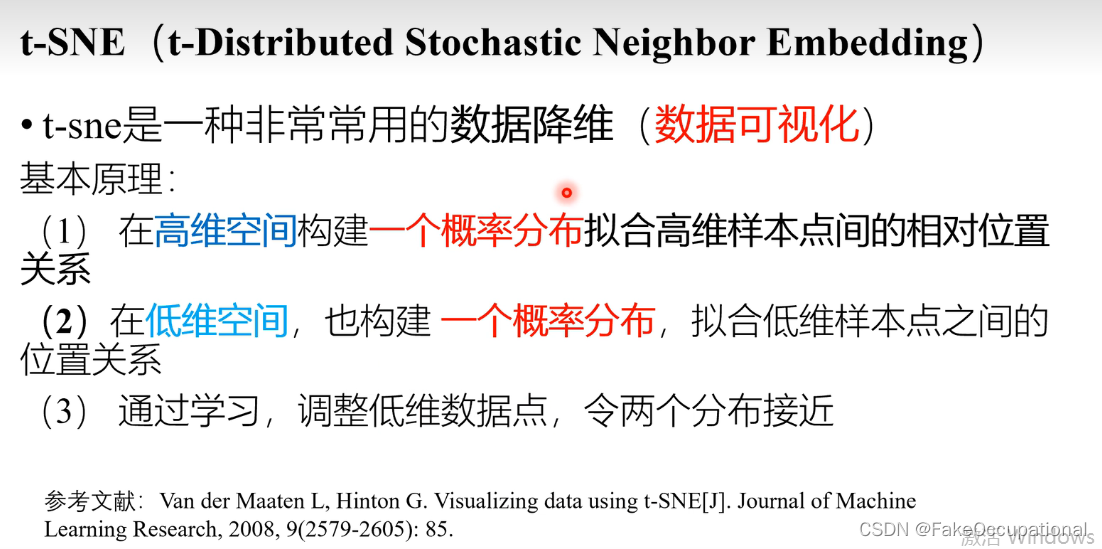
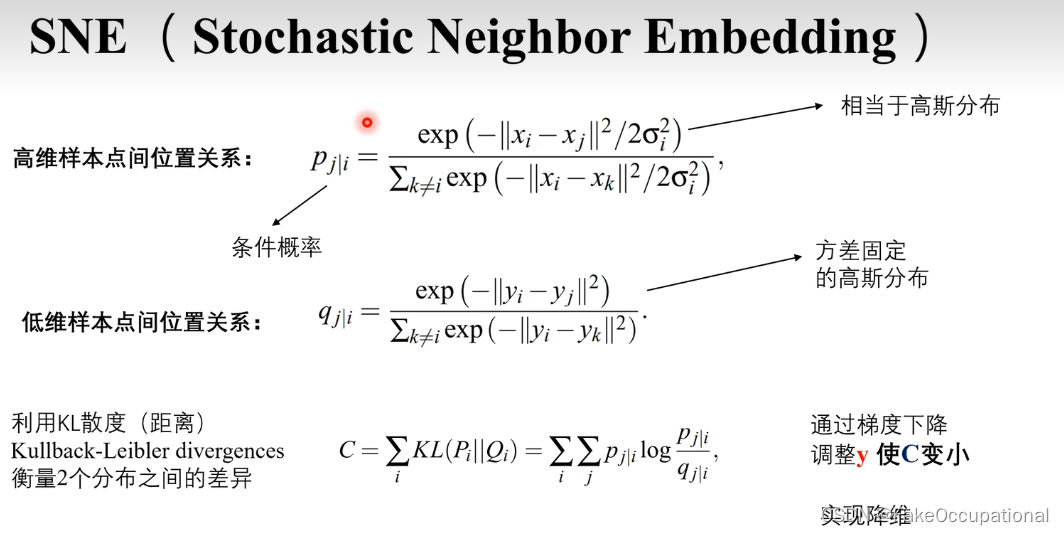
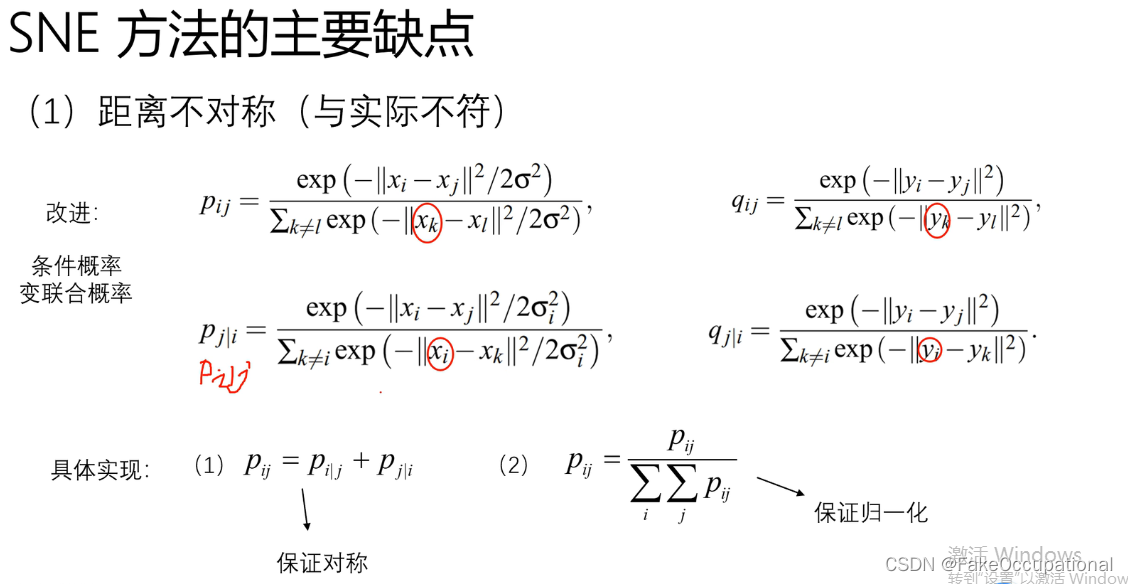

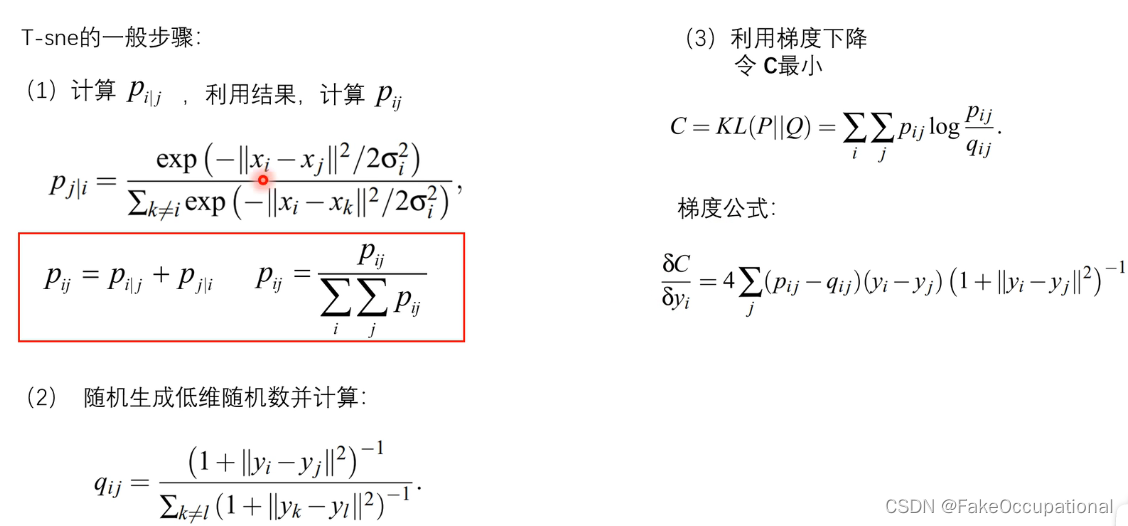
参考与更多
pytorch官方保存加载模型教程(包含使用以 TorchScript 格式导出/加载模型)
模型字典的修改: https://discuss.pytorch.org/t/how-to-load-part-of-pre-trained-model/1113/2
scikit-learn.org
https://github.com/shivanichander/tSNE/blob/master/Code/tSNE%20Code.ipynb
t-SNE:最好的降维方法之一 - 知乎 (zhihu.com)
https://discuss.pytorch.org/t/changing-state-dict-value-is-not-changing-model/88695/2
model = nn.Linear(1, 1)
print(model.weight)
# ISOMAP https://scikit-learn.org.cn/view/452.html
from sklearn.manifold import Isomap
digits_final = Isomap(n_components=2).fit_transform(res)
边栏推荐
- R语言向前或者向后移动时间序列数据(自定义滞后或者超前的期数):使用dplyr包中的lag函数将时间序列数据向前移动一天(设置参数n为正值)
- AVH Deployment Practice (1) | Deploying the Flying Paddle Model on Arm Virtual Hardware
- Why is the field of hacking almost filled with boys?
- 11 pinia使用
- 浏览器自带的拾色器
- MySQL数据库操作
- 「秋招系列」MySQL面试核心25问(附答案)
- [MySQL] Mysql paradigm and the role of foreign keys
- vb中如何连接mysql_vb怎么连接数据库「建议收藏」
- Ubantu专题5:设置静态ip地址
猜你喜欢
随机推荐
女性服务社群产品设计
Bilateral filtering acceleration "recommended collection"
Unity中实现点选RenderTexture中的3D模型
thread_local 变量的析构顺序
Synchronized和volatile 面试简单汇总
更新数据表update
国内市场上的BI软件,到底有啥区别
WPF项目--控件入门基础用法,必知必会XAML
How useful is four-quadrant time management?
MySQL的相关问题
Jmeter常用的十大组件
为什么黑客领域几乎一片男生?
名创优品斥资6.95亿购买创始人叶国富所持办公楼股权
DBeaver连接MySQL 8.x时Public Key Retrieval is not allowed 错误解决
Implementing click on the 3D model in RenderTexture in Unity
Browser's built-in color picker
RecyclerView的高效使用第一节
TRACE32——C源码关联
The use of border controls
对话庄表伟:开源第一课


